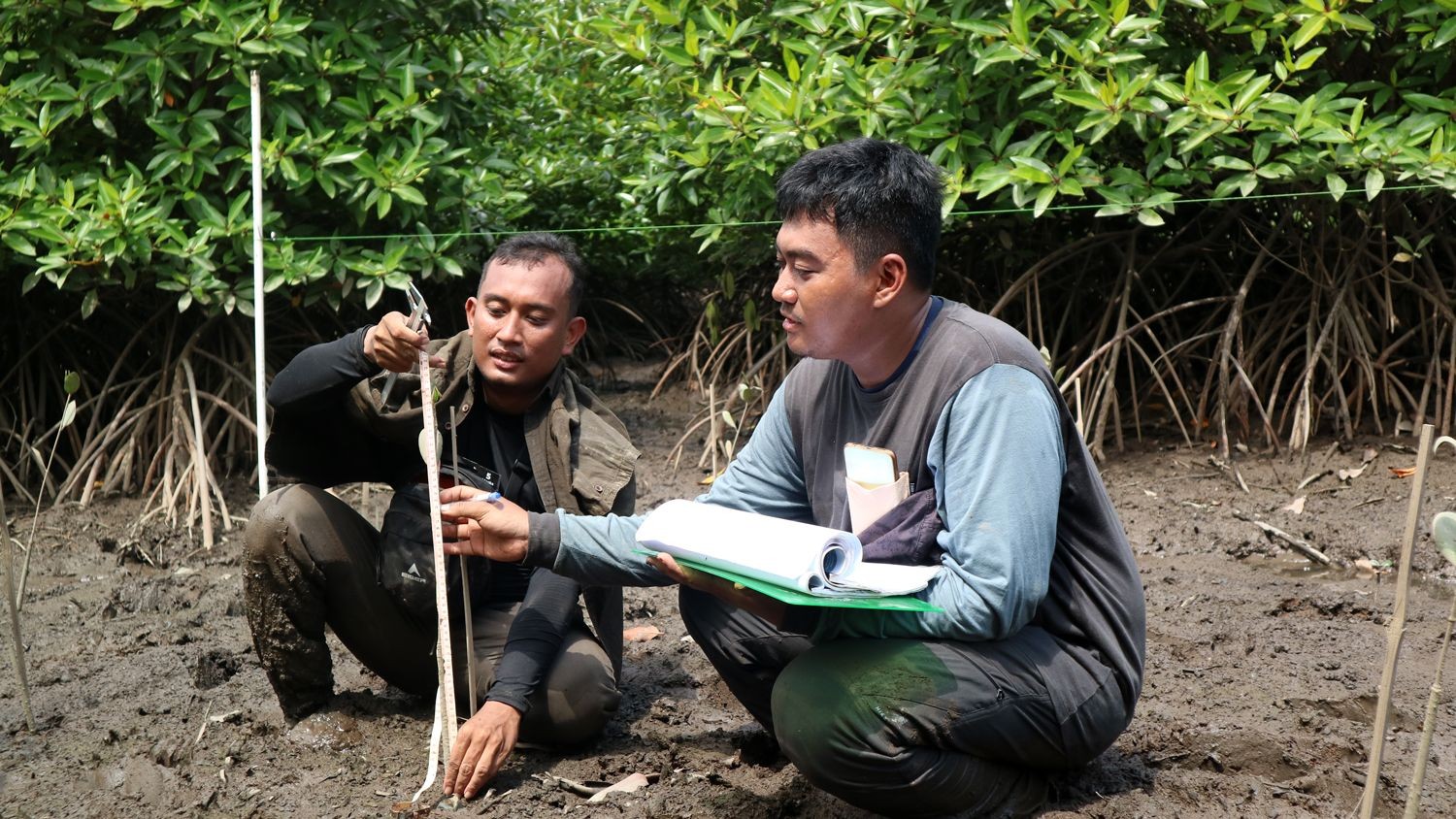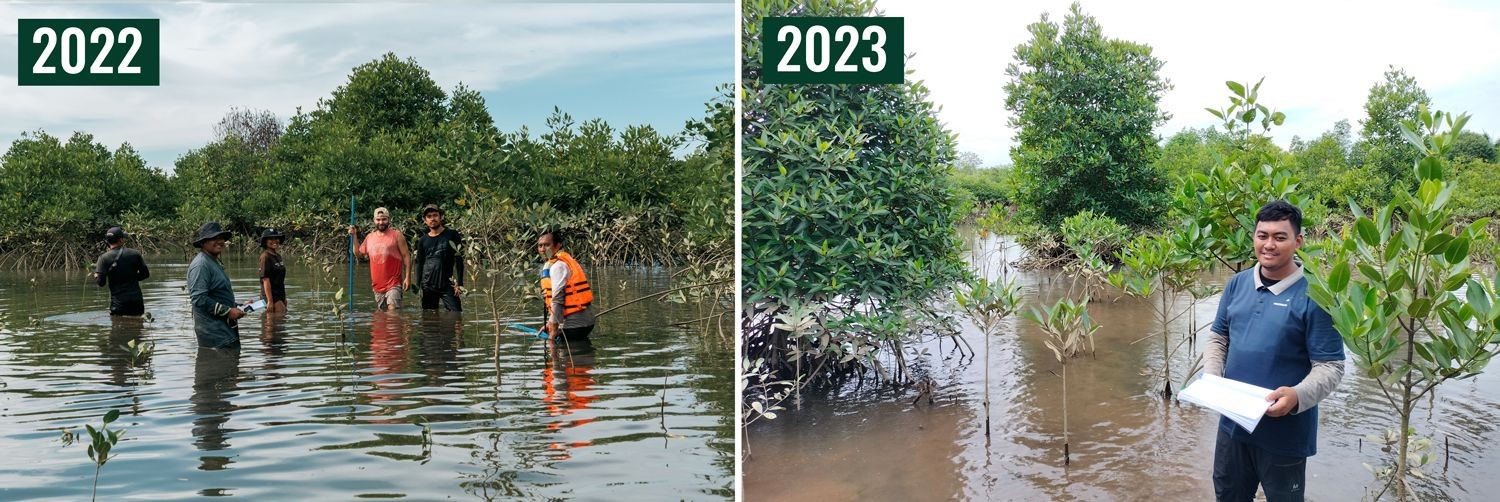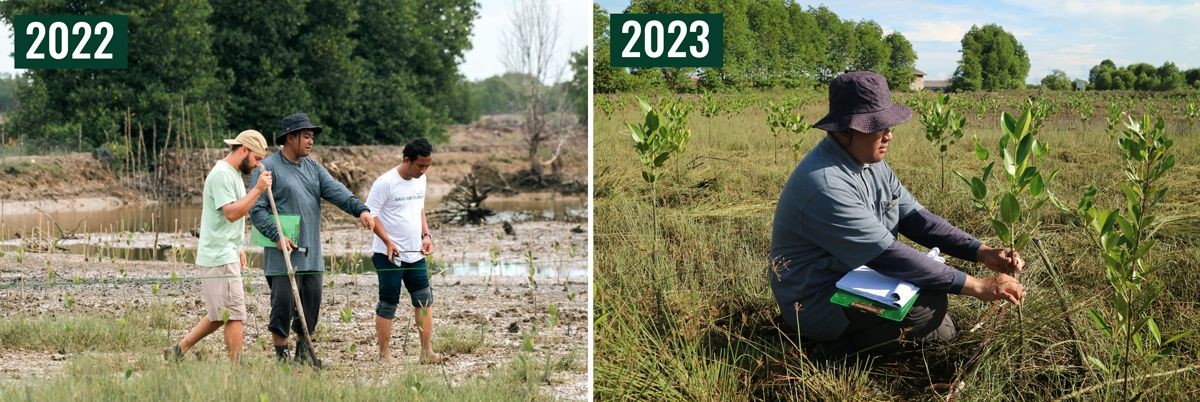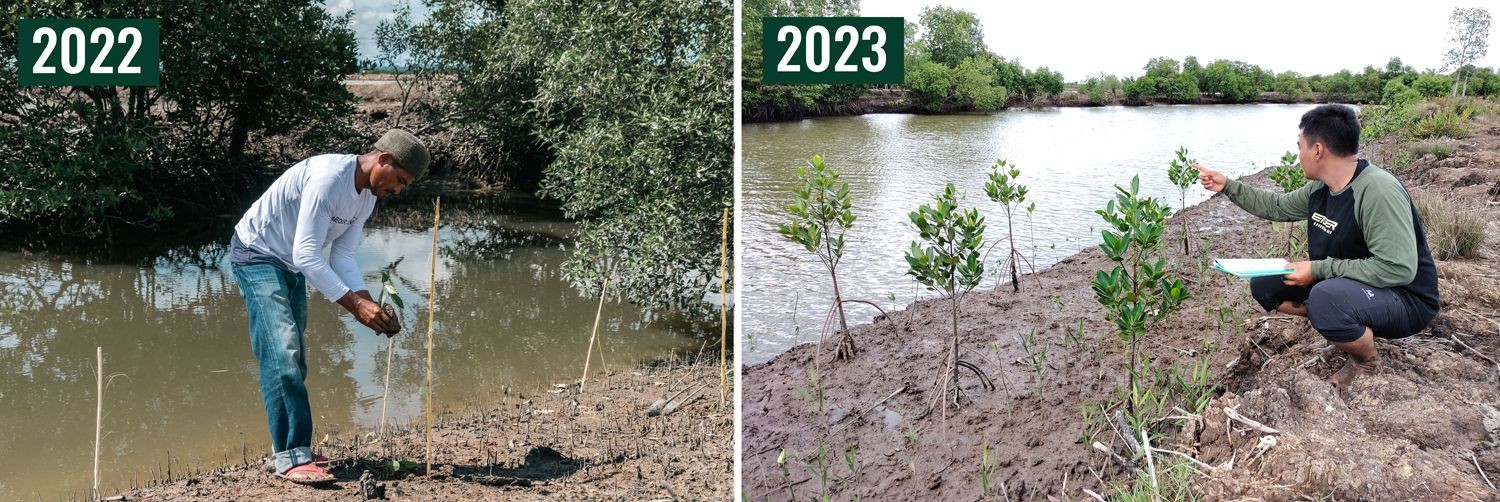Eco-tourism can indeed be a powerful force for good in regions like Sumatra and Aceh. SIXT.VN understands the importance of sustainable travel and its positive impact on local communities and the environment. This article explores how eco-tourism initiatives are making a difference in these Indonesian regions, focusing on conservation efforts and community empowerment while traveling in Indonesia, including North Sumatra and Aceh provinces.
1. What is Eco-Tourism and Why is it Important for Sumatra and Aceh?
Eco-tourism is responsible travel to natural areas that conserves the environment, sustains the well-being of the local people, and involves interpretation and education. For Sumatra and Aceh, it’s incredibly important because it offers a sustainable alternative to destructive practices like deforestation and unsustainable resource extraction.
Eco-tourism can drive conservation efforts, provides locals with economic opportunities, promotes environmental awareness, and helps to preserve cultural heritage. Areas of ecological importance can be preserved and can be sources of natural beauty. Eco-tourism can encourage visitors to respect and protect the natural resources of Sumatra and Aceh, contributing to their long-term conservation.
2. How are Mangrove Restoration Projects Benefiting Sumatra and Aceh?
Mangrove restoration projects, such as the one Reforest’Action is implementing with local NGO Yakopi, provide numerous ecological and socio-economic benefits to coastal communities in Sumatra and Aceh. According to the Food and Agriculture Organization of the United Nations (FAO), mangroves play a crucial role in protecting coastlines from erosion, providing habitats for diverse marine life, and acting as carbon sinks.
2.1 Ecological Benefits of Mangrove Restoration
- Biodiversity: Restored mangroves create habitats for various species of birds, insects, fish, mammals, and reptiles, enhancing the ecological vitality of the region.
- Coastal Protection: Mangroves serve as natural barriers, reducing the impact of waves and storms on coastal areas, preventing erosion and protecting communities.
- Carbon Sequestration: Mangroves are highly effective at capturing and storing carbon dioxide, helping to mitigate climate change.
2.2 Socio-Economic Benefits of Mangrove Restoration
- Improved Livelihoods: The projects create jobs in nursery management, planting, and community patrol, providing income for local residents.
- Diversified Income: Communities can develop income-generating activities based on mangrove resources, such as palm sugar production and sustainable fishing.
- Environmental Awareness: Educational programs increase awareness of the importance of mangrove conservation among local people and school children.
 Yakopi-4.jpg
Yakopi-4.jpg
3. What are the Key Achievements of Mangrove Restoration Projects in Sumatra and Aceh?
Mangrove restoration projects in Sumatra and Aceh have achieved significant milestones, as evidenced by the Reforest’Action audit in December 2023. These achievements underscore the effectiveness and sustainability of the projects.
3.1. Tree Planting and Survival Rates
According to a report by the Center for International Forestry Research (CIFOR), mangrove restoration initiatives globally have seen varying degrees of success. However, projects in Sumatra and Aceh have demonstrated high survival rates and significant increases in mangrove cover.
- Number of Trees Planted: Over 880,000 mangrove trees were planted in the first two years of the Reforest’Action project.
- Survival Rate: The project boasts a nearly 90% survival rate for planted trees, indicating the excellent health and resilience of the restored mangroves.
3.2. Community Engagement and Training
Community involvement is crucial for the success of mangrove restoration. The Yakopi project has successfully engaged local communities through meetings, training sessions, and employment opportunities, per a study from the World Wildlife Fund (WWF), which highlights community participation.
- Village Meetings: 29 village meetings were organized, attended by 391 people, ensuring community participation in decision-making.
- Training Activities: 14 training sessions were conducted, focusing on nursery management and mangrove restoration.
3.3. Job Creation and Economic Development
Mangrove restoration projects provide employment opportunities and support sustainable economic development in local communities. The International Labour Organization (ILO) emphasizes the importance of such projects in creating green jobs and promoting sustainable livelihoods.
- Employment: The project employed 439 people in nursery and planting teams in the first year.
- Community Patrol: 18 villagers were involved in community patrol activities to protect the mangroves from deforestation.
4. How do Local Communities Participate in Eco-Tourism and Conservation Efforts?
Local communities are integral to the success of eco-tourism and conservation efforts in Sumatra and Aceh. Their involvement ensures that projects are culturally sensitive, economically beneficial, and environmentally sustainable.
4.1. Community-Based Eco-Tourism Initiatives
According to a report by The Nature Conservancy, community-based eco-tourism can provide significant economic benefits while promoting conservation.
- Ecotourism in Dogang: The village of Dogang has launched an ecotourism initiative, leveraging the natural resources of the mangroves for tourism while prioritizing biodiversity conservation.
- Local Participation: 45 local participants are involved in the ecotourism program, benefiting from increased income and awareness.
4.2. Collaborative Management and Decision-Making
Engaging local communities in the planning and management of conservation projects ensures their long-term sustainability and effectiveness.
- Village Meetings: Yakopi conducts regular village meetings to consult with local communities and integrate their feedback into project activities.
- Memorandum of Understanding: Yakopi establishes a 20-year memorandum of understanding with village stakeholders before starting restoration activities.
4.3. Education and Awareness Programs
Educating local communities about the importance of conservation and sustainable resource management is essential for fostering long-term stewardship.
- School Programs: Yakopi conducts awareness-raising programs in schools in Aceh and North Sumatra, reaching over 400 students in the first year.
- Environmental Education: Training sessions focus on environmental education, improving technical skills and environmental awareness among local people.
 Pasar-Rawa-before-after-1.jpg
Pasar-Rawa-before-after-1.jpg
5. What Types of Eco-Tourism Activities are Available in Sumatra and Aceh?
Sumatra and Aceh offer a diverse range of eco-tourism activities that allow visitors to experience the natural beauty and cultural richness of the regions while supporting conservation and local communities.
5.1. Wildlife Watching and Nature Photography
- Gunung Leuser National Park: This park offers opportunities to see orangutans, tigers, elephants, and other wildlife in their natural habitat.
- Simeulue Island: Known for its pristine beaches and surfing spots, Simeulue also provides opportunities for bird watching and exploring marine ecosystems.
5.2. Trekking and Hiking
- Mount Sibayak: A popular hiking destination near Berastagi in North Sumatra, offering stunning views of the surrounding landscape.
- Aceh’s Highlands: Explore the Gayo Highlands, known for its coffee plantations, lush forests, and traditional villages.
5.3. Cultural Tourism
- Banda Aceh: Visit historical sites such as the Baiturrahman Grand Mosque and the Tsunami Museum to learn about Aceh’s history and culture.
- Traditional Villages: Explore traditional villages in the Gayo Highlands and learn about local customs, crafts, and traditions.
5.4. Water Sports and Diving
- Weh Island: Famous for its diving and snorkeling spots, Weh Island offers crystal-clear waters and diverse marine life.
- Banyak Islands: This archipelago offers pristine beaches, surfing spots, and opportunities for island hopping.
6. What are the Challenges Facing Eco-Tourism in Sumatra and Aceh?
While eco-tourism offers significant benefits, it also faces several challenges that need to be addressed to ensure its long-term sustainability and effectiveness.
6.1. Deforestation and Habitat Loss
- Illegal Logging: Illegal logging continues to threaten forests and mangrove ecosystems in Sumatra and Aceh, reducing biodiversity and disrupting ecosystem services.
- Palm Oil Plantations: The expansion of palm oil plantations has led to widespread deforestation and habitat loss, impacting wildlife populations and local communities.
6.2. Infrastructure and Accessibility
- Limited Infrastructure: Poor infrastructure, including roads, transportation, and tourism facilities, can hinder the development of eco-tourism in remote areas.
- Accessibility: Some eco-tourism destinations are difficult to reach, limiting the number of visitors and potential economic benefits for local communities.
6.3. Lack of Awareness and Education
- Limited Awareness: Many local communities and visitors may lack awareness of the importance of eco-tourism and sustainable practices.
- Inadequate Education: Insufficient education programs can hinder efforts to promote responsible tourism and conservation.
6.4. Funding and Resources
- Limited Funding: Insufficient funding can limit the capacity of local organizations to implement and manage eco-tourism projects.
- Resource Constraints: Conservation efforts may be constrained by a lack of resources, including equipment, training, and technical expertise.
7. How Can Eco-Tourism Help Mitigate Climate Change in Sumatra and Aceh?
Eco-tourism can play a significant role in mitigating climate change in Sumatra and Aceh by promoting conservation, reducing deforestation, and supporting sustainable practices.
7.1. Reforestation and Carbon Sequestration
- Mangrove Restoration: Mangrove restoration projects help to sequester carbon dioxide from the atmosphere, reducing greenhouse gas emissions and mitigating climate change.
- Forest Conservation: Protecting forests and promoting sustainable forest management practices can help to maintain carbon sinks and prevent deforestation.
7.2. Sustainable Land Use Practices
- Agroforestry: Promoting agroforestry practices, such as planting trees alongside crops, can help to improve soil health, increase biodiversity, and sequester carbon.
- Sustainable Agriculture: Encouraging sustainable agricultural practices, such as organic farming and reduced use of chemical fertilizers, can help to reduce greenhouse gas emissions.
7.3. Renewable Energy and Energy Efficiency
- Solar Power: Promoting the use of solar power and other renewable energy sources can help to reduce reliance on fossil fuels and lower carbon emissions.
- Energy Efficiency: Encouraging energy-efficient practices in tourism facilities and local communities can help to reduce energy consumption and lower carbon footprints.
8. What Policies and Regulations Support Eco-Tourism in Sumatra and Aceh?
Effective policies and regulations are essential for supporting the development of eco-tourism and ensuring its sustainability in Sumatra and Aceh.
8.1. National and Regional Legislation
- Environmental Protection Laws: National and regional laws that protect forests, mangroves, and other natural resources are crucial for supporting eco-tourism.
- Tourism Regulations: Regulations that promote sustainable tourism practices, such as waste management, conservation, and community involvement, can help to minimize the negative impacts of tourism.
8.2. Certification and Standards
- Eco-Tourism Certification: Eco-tourism certification programs can help to ensure that tourism operators adhere to sustainable practices and meet certain environmental and social standards.
- Sustainable Tourism Standards: Implementing sustainable tourism standards can help to promote responsible tourism and protect natural and cultural resources.
8.3. Community-Based Management
- Community Forest Management: Empowering local communities to manage and protect forests can help to promote sustainable forest management and conservation.
- Community Protected Areas: Establishing community protected areas can help to conserve biodiversity and support local livelihoods.
 Cinta-Raja-before-after.jpg
Cinta-Raja-before-after.jpg
9. What are Some Successful Eco-Tourism Models in Other Regions That Could be Applied to Sumatra and Aceh?
Learning from successful eco-tourism models in other regions can provide valuable insights for developing and improving eco-tourism in Sumatra and Aceh.
9.1. Costa Rica’s Eco-Tourism Model
According to the Costa Rican Tourism Board, Costa Rica has become a global leader in eco-tourism by emphasizing conservation, sustainability, and community involvement.
- Protected Areas: Establishing a network of protected areas, including national parks and reserves, has helped to conserve biodiversity and attract eco-tourists.
- Sustainable Practices: Promoting sustainable tourism practices, such as eco-lodges, responsible tour operators, and community-based tourism initiatives, has helped to minimize the negative impacts of tourism.
9.2. Bhutan’s High-Value, Low-Impact Tourism Model
As highlighted by the Tourism Council of Bhutan, Bhutan has adopted a unique tourism model that focuses on high-value, low-impact tourism to protect its cultural and natural heritage.
- Sustainable Development Fee: Implementing a sustainable development fee for all tourists helps to fund conservation efforts and support local communities.
- Limited Tourism: Limiting the number of tourists and promoting responsible tourism practices helps to minimize the environmental and social impacts of tourism.
9.3. Palau’s Pristine Paradise Commitment
As outlined by the Palau Legacy Project, Palau has implemented innovative policies to protect its marine environment and promote sustainable tourism.
- Palau Pledge: Requiring all visitors to sign the Palau Pledge, a commitment to respect and protect the country’s natural environment, helps to raise awareness and promote responsible tourism.
- Marine Protected Areas: Establishing marine protected areas and implementing sustainable fishing practices helps to conserve marine biodiversity and support local livelihoods.
10. How Can SIXT.VN Support Eco-Tourism Efforts in Sumatra and Aceh?
SIXT.VN is committed to supporting eco-tourism efforts in Sumatra and Aceh by providing convenient and reliable travel services that promote sustainable and responsible tourism.
10.1. Sustainable Transportation Options
- Eco-Friendly Vehicles: Offering hybrid and electric vehicles for rent can help to reduce carbon emissions and promote sustainable transportation.
- Shuttle Services: Providing shuttle services to eco-tourism destinations can help to reduce traffic congestion and lower carbon footprints.
10.2. Partnerships with Local Communities and Organizations
- Supporting Local Businesses: Partnering with local eco-lodges, tour operators, and community-based tourism initiatives can help to support local livelihoods and promote sustainable tourism.
- Donations to Conservation Projects: Donating a portion of our profits to conservation projects in Sumatra and Aceh can help to support biodiversity conservation and environmental protection.
10.3. Promoting Responsible Tourism Practices
- Educating Travelers: Providing travelers with information about responsible tourism practices, such as minimizing waste, respecting local cultures, and supporting local communities, can help to promote sustainable tourism.
- Promoting Eco-Friendly Accommodations: Recommending eco-friendly accommodations that adhere to sustainable practices can help to reduce the environmental impact of tourism.
By embracing eco-tourism and supporting conservation efforts, travelers can contribute to the long-term sustainability and well-being of Sumatra and Aceh. Let SIXT.VN be your trusted partner in exploring these beautiful regions responsibly.
Are you ready to experience the natural wonders of Sumatra and Aceh while supporting sustainable tourism? Contact SIXT.VN today to learn more about our eco-friendly travel options and how you can make a difference.
Address: 260 Cau Giay, Hanoi, Vietnam
Hotline/Whatsapp: +84 986 244 358
Website: SIXT.VN
 Abeuk-before-after-2.jpg
Abeuk-before-after-2.jpg
FAQ about Eco-Tourism in Sumatra and Aceh
1. What is eco-tourism?
Eco-tourism is responsible travel to natural areas that conserves the environment, sustains the well-being of the local people, and involves interpretation and education. It’s about minimizing negative impacts and maximizing positive contributions to both the environment and local communities.
2. Why is eco-tourism important for Sumatra and Aceh?
Eco-tourism offers a sustainable alternative to destructive practices like deforestation and unsustainable resource extraction. It drives conservation efforts, provides economic opportunities, promotes environmental awareness, and helps preserve cultural heritage.
3. How are mangrove restoration projects benefiting Sumatra and Aceh?
Mangrove restoration projects provide numerous ecological and socio-economic benefits, including biodiversity enhancement, coastal protection, carbon sequestration, improved livelihoods, diversified income, and increased environmental awareness.
4. What types of eco-tourism activities are available in Sumatra and Aceh?
Sumatra and Aceh offer a diverse range of eco-tourism activities, including wildlife watching, nature photography, trekking, hiking, cultural tourism, and water sports such as diving and snorkeling.
5. What are the main challenges facing eco-tourism in these regions?
Challenges include deforestation, habitat loss, limited infrastructure, lack of awareness and education, and funding constraints. Addressing these challenges is crucial for ensuring the long-term sustainability and effectiveness of eco-tourism.
6. How can eco-tourism help mitigate climate change in Sumatra and Aceh?
Eco-tourism can play a significant role in mitigating climate change by promoting reforestation, carbon sequestration, sustainable land use practices, and the use of renewable energy.
7. What policies and regulations support eco-tourism in these regions?
Effective policies and regulations are essential for supporting the development of eco-tourism. These include national and regional environmental protection laws, tourism regulations, eco-tourism certification programs, and community-based management initiatives.
8. Can you give examples of successful eco-tourism models in other regions that could be applied to Sumatra and Aceh?
Successful models include Costa Rica’s emphasis on protected areas and sustainable practices, Bhutan’s high-value, low-impact tourism, and Palau’s Pristine Paradise commitment with its Palau Pledge.
9. How can SIXT.VN support eco-tourism efforts in Sumatra and Aceh?
SIXT.VN supports eco-tourism by offering sustainable transportation options, partnering with local communities and organizations, and promoting responsible tourism practices through traveler education and recommendations for eco-friendly accommodations.
10. What are some specific examples of eco-tourism destinations in Sumatra and Aceh?
Examples include Gunung Leuser National Park, Simeulue Island, Mount Sibayak, the Gayo Highlands in Aceh, Banda Aceh, Weh Island, and the Banyak Islands.
By choosing SIXT.VN for your travel needs, you are not only ensuring a comfortable and convenient journey but also contributing to the preservation of Sumatra and Aceh’s natural beauty and supporting the livelihoods of local communities. Explore these incredible destinations responsibly and make a positive impact on the environment.



